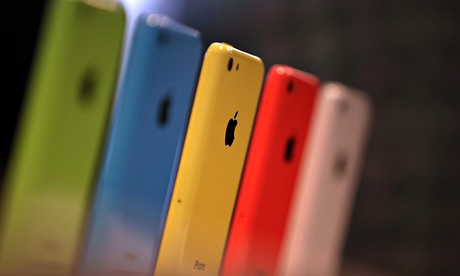
According to the art teacher and artist Danny Cuming, many of us are carrying a miracle in our pocket. The iPhone may be small, but it is powerful (“a sophisticated painting suite”, says Danny), and for many artists, it is now as essential as a pencil and pad. I was blown away by David Hockney’s iPad and iPhone art, but even though I draw in my spare time, I’ve done little more than a doodle on my phone. For me, the technology just feels too daunting.
But I think I’m missing out, so I turn to Danny for a lesson. “It’s not going to be quick and easy,” he says, which is strangely reassuring. “But with patience, practice and perseverance you’ll master it.” Here are his five steps to get started:
The basics
My first task is quick and easy: I download the free Brushes app on to my iPhone. Free! I can’t believe it. “It’s also the most consistent painting app available,” says Danny. “It’s very intuitive, and although it looks simple it has a lot of different features.”
I begin, as Danny instructs me, by looking at all my options – there’s the brush, the colour palette, opacity, layers. “Take time to find out what they all do. There are tutorials online which will introduce you to all the buttons, so get to know each one. Don’t rush into doing a painting straight away.”
Drawing
The next step is to set up a still life – something with a range of colours and textures. I pick a lemon, an orange and a cup. Danny says to “start small, and leave landscapes for later”. I sketch an outline of my still life in a pencil-like brush line of about 10 pixels.
I use my pointer finger, although Hockney prefers his more flexible thumb. Danny thinks either is better than a stylus, which is too clinical. If I make a mistake, I can easily undo it with the squiggly line tool – my new best friend. It’s important to get your sketch right, says Danny, because as with all art “everything starts with drawing”.
Colour
To build up my painting, I start to use colour on a new layer (the small square button in the bottom right-hand corner of the screen). This means I won’t interfere with my original sketch and can refer back to it if I need it. Choosing colour is all about instinct. “The worst thing you could do would be to upload a photo, and then copy the colours with your brush tool,” Danny says. “The human eye sees colour differently to a computer. Look really hard at your still life, and pick the colours that feel right. Great colourists like JMW Turner or Gary Hume do it instinctively. The colours they choose might not be the same as a photo, but they work.”
Texture
It’s time to mess about with my brushes. I open up the menu, and begin to explore the seemingly infinite choice of textures, shapes and opacity with which I can make marks. “My aim with digital drawing is that it shouldn’t look like a digital drawing,” Danny explains. He tells me I can achieve that by using my fingers to zoom in close to the work, so that I can build up textures or light and shade in detail. “Look at your still life – the lemon and orange are dimpled, so choose a dimpled brush effect. Look for similarities in the application and the objects you are looking at.”
A warning though: “If you’re not careful, you could fall victim to choice and your painting will become a jumble of visual information. Explore, but also limit yourself. Or make a virtue of digital and go all out with crude textures and bright pop colours.”
The challenge
I still don’t feel my painting is finished, but it’s much richer and more interesting than I thought it would be. So that I don’t immediately forget all my new skills, I decide to take on a little Hockney-inspired challenge and paint flowers on my phone every day to send to friends, as Hockney does often. Now I’ve had a little bit of practice, it should be quick and easy.
How to Paint with an iPad/Tablet with Danny Cuming on Tuesday afternoons 1.30pm-4pm, Heatherley’s School of Fine Art, London SW10; dannypockets.com

